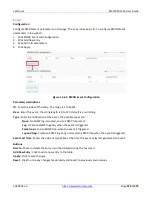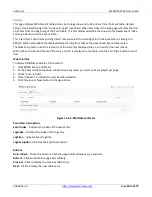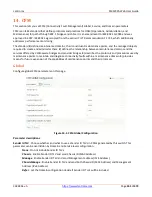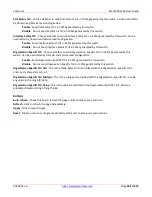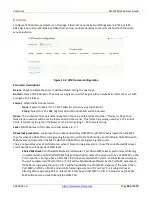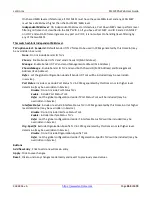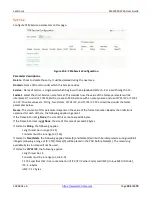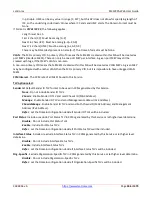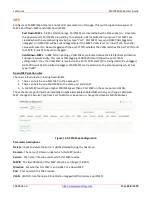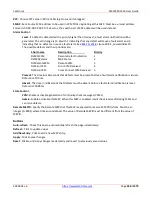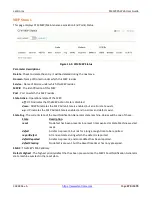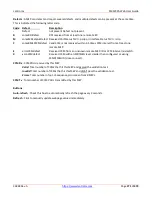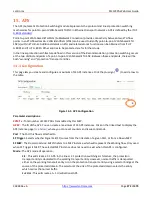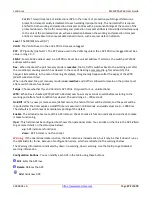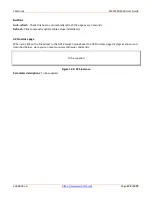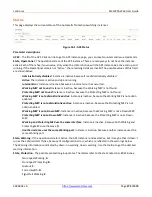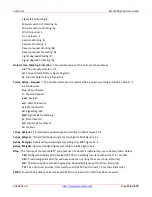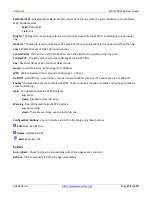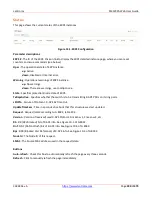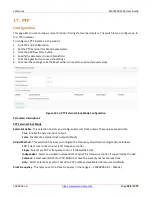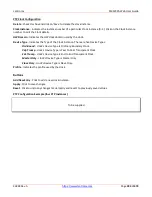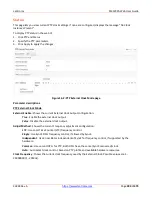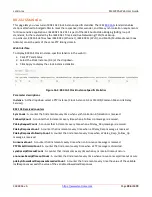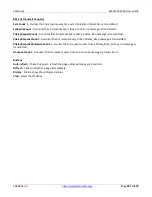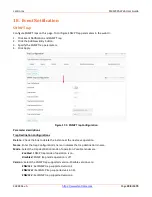
Lantronix
SM12XPA Web User Guide
33848 Rev. A
Page
273
of
473
1+1 Bi
: This will create a 1+1 Bidirectional APS. In the linear 1+1 protection switching architecture, a
protection transport entity is dedicated to each working transport entity. The normal traffic is copied
and fed to both working and protection transport entities with a permanent bridge at the source of the
protected domain. The traffic on working and protection transport entities is transmitted simultaneously
to the sink of the protected domain, where a selection between the working and protection transport
entities is made based on some predetermined criteria, such as server defect indication.
Level
: The MD/MEG Level (0-7).
VLAN
: The VLAN ID used in the L-APS PDUs. 0 means untagged.
PCP
: PCP (priority) (default 7). The PCP value used in the VLAN tag unless the L-APS PDU is untagged. Must be a
value in range 0 - 7.
SMAC
: Source MAC address used in L-APS PDUs. Must be a unicast address. If all-zeros, the switch port's MAC
address will be used.
Rev
: When checked, the port recovery mode is
revertive
, that is, traffic switches back to the working port after
the condition(s) causing a switch has cleared. In the case of clearing a command (e.g. forced switch), this
happens immediately. In the case of clearing of a defect, this generally happens after the expiry of the WTR
(Wait-To-Restore) timer.
When unchecked, the port recovery mode is
non-revertive
and traffic is allowed to remain on the protect port
after a switch reason has cleared.
TxAps
: Choose whether this end transmits APS PDUs. Only used for 1+1, unidirectional.
WTR
: When Rev is checked, WTR (Wait-To-Restore) sets how many seconds to wait before restoring to the
working port after a fault condition has cleared. The valid range 1 – 720 seconds.
HoldOff
: When a new (or more severe) defect occurs, the hold-off timer will be started, and the event will be
reported after the timer expires. HoldOff time is measured in milliseconds, and valid values are 0 – 10000 ms.
The default is 0, which means immediate reporting of the defect.
Enable
: The administrative state of this APS instance. Check to make it function normally and uncheck to make
it cease functioning.
Oper
: This field cannot be configured but shows the operational state. You can click on the link in the APS # field
to get more details on the status (see below).
up
: APS instance is functional.
down
: APS instance is not functional.
Warning
: If the operational state is Active, the APS instance is indeed active, but it may be that it doesn't run as
the administrator thinks, because of configuration errors, which are reflected in the warnings below.
The Warning information is indicated by down: no warning, down: warning. Use the tooltip to get detailed
warning information.
Configuration Buttons
: You can modify each APS in the table using these buttons:
ʘ
Edit
: Edits the APS row.
ʘ
Delete
: Deletes the APS.
Add
: Adds new APS.

